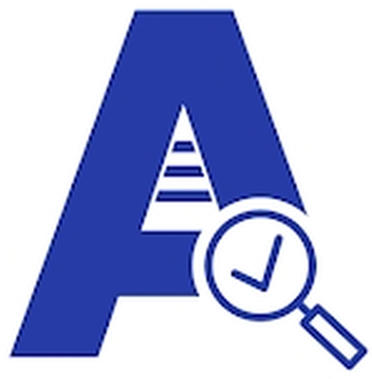6S Audit Best Practices
6S Audit Best practices involve assessing the implementation and adherence to the principles of 6S Lean methodology, which focuses on workplace organization and efficiency.
Here are some 6S Audit Best Practices for conducting a 6S Lean audit:

Clear Objectives:
- Define the objectives of the audit, such as identifying areas for improvement, ensuring compliance with standards, or assessing progress towards organizational goals.
Engage Stakeholders:
- Involve employees at all levels in the audit process to gain diverse perspectives and ensure buy-in for improvement initiatives.
Standardized Checklist:
- Develop a standardized audit checklist that covers all aspects of the 6S Lean methodology, including Sort, Set in Order, Shine, Standardize, Sustain, and Safety.
Training and Awareness:
- Provide training to auditors on the principles of 6S Lean and how to conduct effective audits.
- Ensure that employees understand the importance of 6S Lean and their role in maintaining a clean, organized, and efficient workplace.
Objective Evaluation:
- Conduct the audit objectively, focusing on factual evidence rather than subjective opinions.
- Use clear criteria and metrics to evaluate each aspect of the 6S Lean methodology.
Thorough Examination:
- Thoroughly examine each area of the workplace, including workstations, storage areas, equipment, and common areas.
- Look for opportunities to eliminate waste, improve organization, and enhance safety and efficiency.
Documentation:
- Document audit findings, including observations, recommendations, and action items.
- Use photos or videos to illustrate areas that require improvement or examples of best practices.
Feedback and Communication:
- Provide feedback to employees on audit results, highlighting areas of success and opportunities for improvement.
- Communicate audit findings to relevant stakeholders and solicit their input on improvement initiatives.
Continuous Improvement:
- Use audit findings to identify areas for continuous improvement and develop action plans to address them.
- Monitor progress over time and conduct regular follow-up audits to track improvements.
Recognition and Rewards:
- Recognize and reward teams or individuals who demonstrate outstanding adherence to 6S Lean principles and contribute to a culture of continuous improvement.
Leadership Support:
- Ensure leadership support and commitment to 6S Lean initiatives, including providing resources, removing barriers, and leading by example.
Integration with Overall Goals:
- Align 6S Lean audit objectives and outcomes with the organization’s overall goals and strategic priorities.
By following these best practices, organizations can conduct effective 6S Lean audits that drive continuous improvement, enhance workplace efficiency, and create a culture of excellence.


Performing a 6S Lean audit using eAuditor Audits & Inspections can streamline the process and improve efficiency. Here’s a step-by-step guide on how to conduct a 6S Lean audit using eAuditor Audits & Inspections:
Download eAuditor Audits & Inspections:
- Download eAuditor Audits & Inspections from Apple or Android App store that allows for customization of 6S Audit Best practices checklist, easy data entry, and photo documentation.
Login/Authentication:
- Users (auditors) log in to the eAuditor Audits & Inspections using their credentials to access the audit features.
Select Audit Type:
- The eAuditor Audits & Inspections allows users to select the type of 6S Lean audit they want to perform (e.g., workstation audit, storage area audit, common area audit) from public checklist templates.
Checklist Selection:
- Users choose the appropriate audit checklist from a predefined list based on the selected audit type.
Audit Process:
- eAuditor Audits & Inspections guides users through the audit process, presenting each item from the checklist one at a time.
- Users assess the current state of each item based on predefined criteria and provide feedback or observations as necessary.
Photo Documentation:
- Users can take photos using the mobile device to document audit findings, including areas of improvement or examples of best practices.
Scoring and Evaluation:
- eAuditor Audits & Inspections automatically calculates scores based on users’ responses to each checklist item.
- Users can review and adjust scores as needed before finalizing the audit.
Real-time Syncing:
- Audit data is synced in real-time to a central database, allowing for immediate access and analysis by stakeholders.
Report Generation:
- Once the audit is complete, eAuditor Audits & Inspections generates a comprehensive report summarizing audit findings, including scores, observations, and recommendations.
- Reports can be customized based on user preferences and exported in various formats (e.g., PDF etc).
Action Planning:
- eAuditor Audits & Inspections facilitates the development of action plans to address areas for improvement identified during the audit.
Notification and Reminders:
- Users receive notifications and reminders for scheduled audits, pending action items, and upcoming deadlines.
Historical Data and Trends:
- eAuditor Audits & Inspections maintains a historical record of audit data, allowing users to track trends over time and measure progress towards improvement goals.
- eAuditor Audits & Inspections Dashboard analytics features can provide insights into performance trends, areas of recurring issues, and opportunities for further optimization.
Security and Compliance:
- eAuditor Audits & Inspections ensures data security and compliance with relevant privacy regulations, safeguarding sensitive information.
